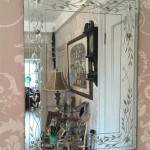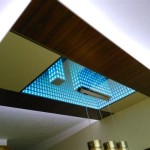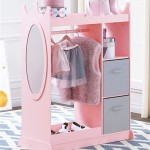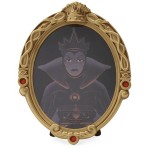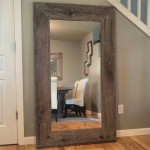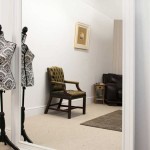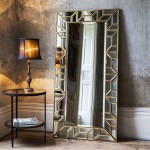In-Shower Mirrors: A Comprehensive Guide
In-shower mirrors provide a convenient and practical solution for grooming tasks performed in the shower, such as shaving, washing one's face, and applying treatments. Their fog-resistant properties allow for clear visibility, even amidst the steam and humidity of a hot shower. This article explores the various aspects of in-shower mirrors, from their functionality and benefits to the different types available and factors to consider during purchase and installation.
The primary advantage of an in-shower mirror is its fog-resistant capability. This crucial feature relies on several different mechanisms. Some mirrors utilize a special anti-fog coating that prevents condensation from forming on the surface. Others employ a reservoir behind the mirror that holds warm water, keeping the mirror surface at a temperature similar to the shower environment, thus minimizing fogging. Some mirrors even incorporate active heating elements powered by batteries or electricity.
Several types of in-shower mirrors cater to different needs and preferences. The most common type is the suction cup mirror, which adheres to smooth surfaces like tile or glass. These mirrors are generally affordable and easy to install, offering portability and flexibility in placement. Another popular option is the adhesive mirror, which uses a strong adhesive backing for a more permanent attachment. This type provides greater stability and is less prone to accidental detachment. Some in-shower mirrors are designed to be integrated into shower caddies or organizers, further enhancing convenience and maximizing space utilization. Finally, built-in mirrors represent a more permanent and luxurious option, often incorporated during bathroom renovations or new construction.
When considering the purchase of an in-shower mirror, several factors warrant attention. Size is an important consideration, depending on individual needs and the available space in the shower. Larger mirrors offer better visibility but may not be suitable for smaller showers. The material of the mirror frame plays a role in both aesthetics and durability. Common materials include plastic, stainless steel, and chrome. Plastic frames are lightweight and affordable, while metal frames offer greater durability and a more premium look. The type of fog-resistant mechanism is another critical factor, with each type offering different levels of effectiveness and cost. Consider the specific needs and shower conditions to determine the most suitable fog-resistant technology.
Proper installation ensures the longevity and functionality of the in-shower mirror. For suction cup mirrors, thorough cleaning of the mounting surface is essential for optimal adhesion. Ensuring the surface is smooth and free of any residue will prevent the mirror from falling. For adhesive mirrors, careful placement is crucial as the adhesive is typically very strong and difficult to remove. Follow the manufacturer's instructions precisely for application and drying time. For built-in mirrors, professional installation is typically recommended to ensure proper integration with the shower structure and plumbing.
Maintenance of in-shower mirrors is relatively straightforward. Regular cleaning with a mild soap and water solution helps to remove soap scum and water spots, maintaining the mirror's clarity. Avoid abrasive cleaners, which can damage the mirror surface and anti-fog coating. For mirrors with a water reservoir, ensure regular refilling with warm water to maintain optimal fog resistance. Periodically inspect suction cups and adhesive backings for wear and tear, replacing them as needed to prevent the mirror from falling.
Beyond basic functionality, some in-shower mirrors offer additional features that enhance convenience and usability. These can include built-in shelves or hooks for storing toiletries, adjustable angles for customized viewing, and even integrated lighting for improved visibility in dimly lit showers. Some high-end models incorporate Bluetooth technology, allowing users to stream music or podcasts while showering.
The market offers a wide range of in-shower mirrors to suit various budgets and preferences. Affordable options typically feature basic functionality and plastic frames, while more expensive models offer premium features such as advanced fog-resistant technology, durable metal frames, and integrated accessories. Researching different brands and models can help identify the best value and features for individual needs.
Choosing the right in-shower mirror can significantly enhance the shower experience, providing convenience and improved visibility for grooming tasks. By carefully considering factors such as size, material, fog-resistant technology, and installation requirements, individuals can select a mirror that meets their specific needs and complements their bathroom décor.
The evolution of in-shower mirrors reflects advancements in materials science and manufacturing techniques. Early models relied primarily on simple coatings or water reservoirs for fog resistance, while modern mirrors incorporate more sophisticated technologies such as active heating elements and specialized anti-fog coatings. The integration of additional features like Bluetooth connectivity and LED lighting further demonstrates the ongoing innovation in this seemingly simple bathroom accessory.

Aqua Fog Free Mirror Electric Lighting Company

Aqua Fog Free Mirror Electric Lighting Company

Aqua Fog Free Mirror Electric Lighting Company

5 Best Fogless Shower Mirrors Of 2024 Reviewed

Clear Shower Mirrors Won T Fog Up

Electric Mirror Acclaim Led Shower Bath Emporium Toronto

Clearmirror Luxury Heated Mirrors Shelves

Stronghold Suction Fogless Mirror

Aqua Fog Free Mirror Electric Lighting Company

Electric Mirror Isf 1123 Acclaim 11 75 X 23 2 81 Fog Free 1 882 50 Focal Point Top Quality Hardware And Plumbing Kitchen Bath

